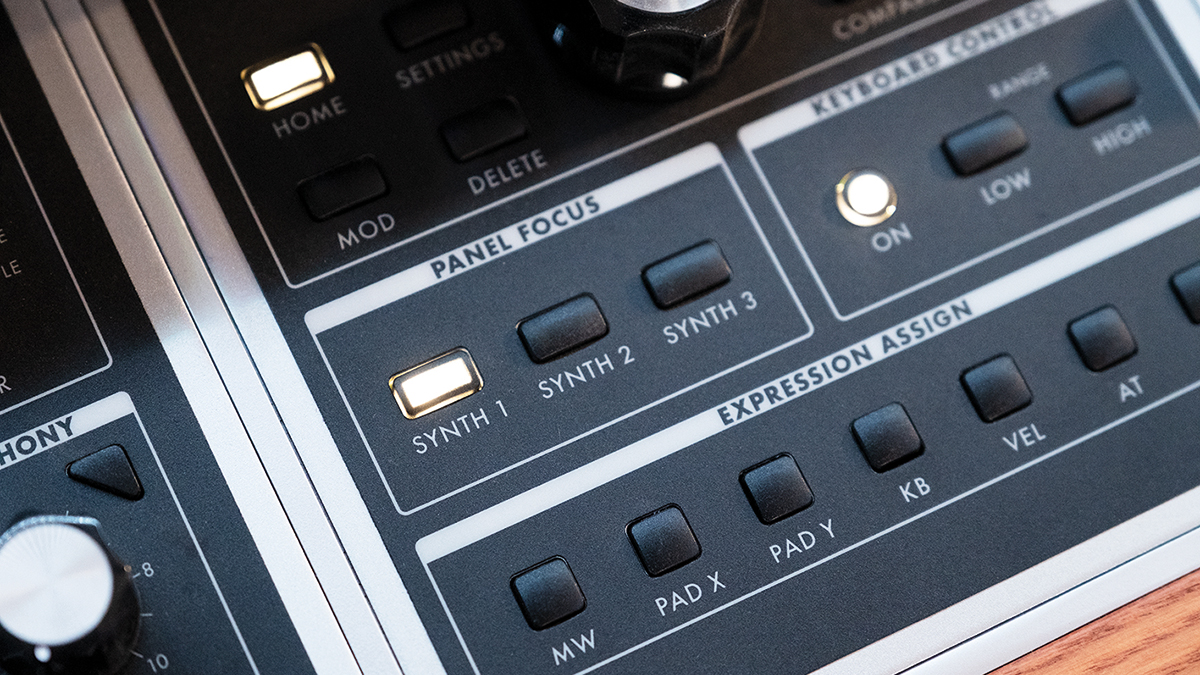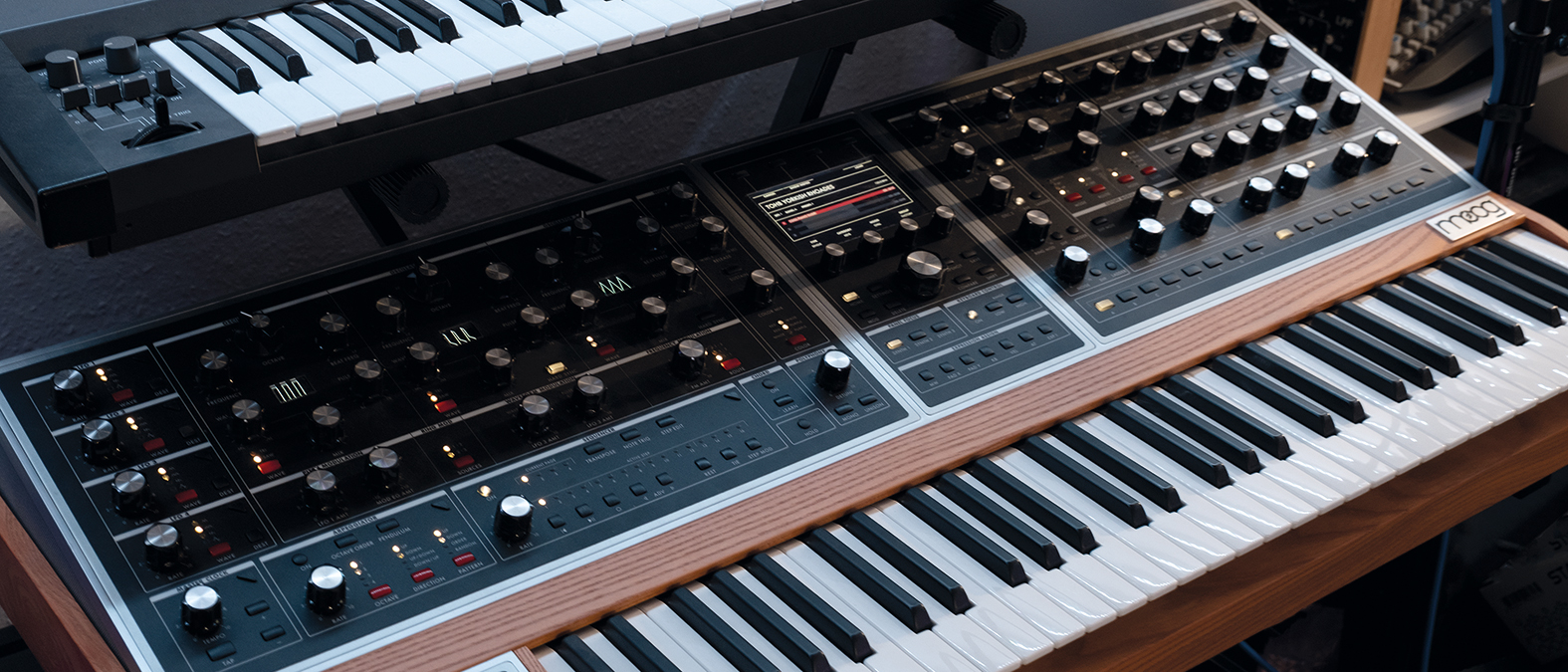MusicRadar Verdict
A beast of an instrument. If you could only ever own a single synth then, well, the clue is in the name.
Pros
- +
Incredibly versatile sound design tools.
- +
Excellent navigation via controls and screen.
- +
Connects easily to other gear with good I/O ports.
Cons
- -
Large and heavy for gigging musicians.
- -
Expensive.
MusicRadar's got your back
Moog One: What is it?
A synth like the Moog One is unlikely to be anybody’s first: it’s large, heavy and expensive. We came to it not long after its release but already had a fairly extensive collection of instruments from ’80s classics like the Juno to modern synths from Korg, Arturia and Sequential, alongside over 1,000hp of Eurorack.
While we have always managed to find uses for our other gear, the Moog One has become the go-to instrument for an ever-increasing number of uses. That might be in part due to its presence in the studio, where it definitely dominates but mostly because we have come to rely on the versatility and simple playability. It has become the core of our musical and sound design work and has helped us shape effects for film and game projects; it’s also become the focus of a whole album.
Initial concerns about pitch drift, especially in the low end, never turned out to be too much of a problem for us. Keeping it in a studio with a stable temperature and humidity helped there, but Moog updated the firmware, which solved the remaining issues. Since updating the firmware it has remained rock solid.
Moog One: Performance and verdict
So, what do we love about it? Firstly it’s just so easy to navigate. The big screen and controls make it a doddle to work with. Saving sounds, sequences and effects is so simple and fast that a session can be productive but repeatable, something we value highly.
Really, it’s the sound design workflow that sells it for us
But really it’s the sound design workflow that sells it for us. Being able to easily assign modulation sources and destinations, without having to dig into menus is a real boon, with excellent visual feedback and being able to dig deeper opens limitless possibilities, but does so only when you need them, staying out of the way when you don’t, meaning the whole instrument is clear and simple.
One is not unamused
Then there’s the sound. We’d put this second after the interface purely because if the workflow wasn’t good we would soon tire of it, no matter how good it sounded. Or we’d end up using presets (we're looking at you DX7).
Luckily the Moog One sounds superb. It caters to every need, from deep but well-rounded basslines to sparkling chimelike tones; from lush, warm electric piano sounds to otherworldly crystalline soundscapes. We attribute this partly to the wonderful oscillators but mostly to the filters and envelopes. The ability to assign each oscillator to either the ladder or state variable filter, in series or parallel, is fantastic, as are the three envelopes.
Want all the hottest music and gear news, reviews, deals, features and more, direct to your inbox? Sign up here.
The filter and amp envelopes are what you’d expect from such an instrument and the third makes it all the more special. We really appreciate a separate envelope generator for that extra level of creative freedom.
The envelopes themselves are similar to those of the Sub37, one of our other favourite synths, and they range from super fast and snappy to long, with a lot of extra depth from things like Loop and Latch. On top of that, and similarly to the LFOs, each of them has a destination button to quickly assign envelopes.
Where we spend most of our time with the One however tends to be with modulation. The possibilities here are endless and it is a breeze to create evolving tones that twist and warp, all the while staying controllable via a multitude of input, from aftertouch (sadly not polyphonic though) to the great XY pad.
We have other synths with XY controls but they often fall flat, unlike the One. As with everything on the One, modulation setup can be as simple as assigning the most common controls to an attribute, or you can dive into further levels of complexity and this is where the large display really comes in handy.
One or three?
It took us a while to get used to One’s wilfully split personality but we're so glad we did. Being able to effectively make it one, two, or three separate synths is so useful. Having a sequence set up on one, a drone with a second and lead on a third makes the One a very playable standalone band in a box.
Creating multitimbral soundscapes that can be split or layered, played, or left running in the background can feel like having the best of modular, alongside the accessibility of keys for a lead at the same time, all from one instrument.

One to rule them all?
We’ve not even touched on the awesome sequencer and arpeggiator, or effects. They’re not the very best available but surpass most built-in offerings and the Eventide reverbs sound wonderful. The chorus is outshone by the (admittedly limited) Juno’s, but still does a good job.
The One still looks and feels new and inspires us every day and, if it was a little lighter we'd happily gig with it. In an ideal world it would have an extra octave and the texture of the black keys could be better but we’ll forgive it all of that for its ability to spark ideas and allow us to realise them, without needing to dig around in menus, meaning we actually use it every day, and love doing so.
MusicRadar verdict: A beast of an instrument. If you could only ever own a single synth then, well, the clue is in the name.
Moog One: The web says
"It's deep but not intimidating, and it's a joy to program and play."
Sound On Sound
Moog One: Hands-on demos
Moog Music Inc
Matt Johnson Jamiroquai
loopop
sonicstate
Moog One: Specifications
- KEY FEATURES 8 or 16 analogue voices, Ladder and state variable filters, 4 LFOs, 3 envelope generators, Pitch and mod wheels plus XY pad and aftertouch, Extensive mod matrix, Eventide effects, Sequencer and arpeggiator.
- CONTACT: Moog
